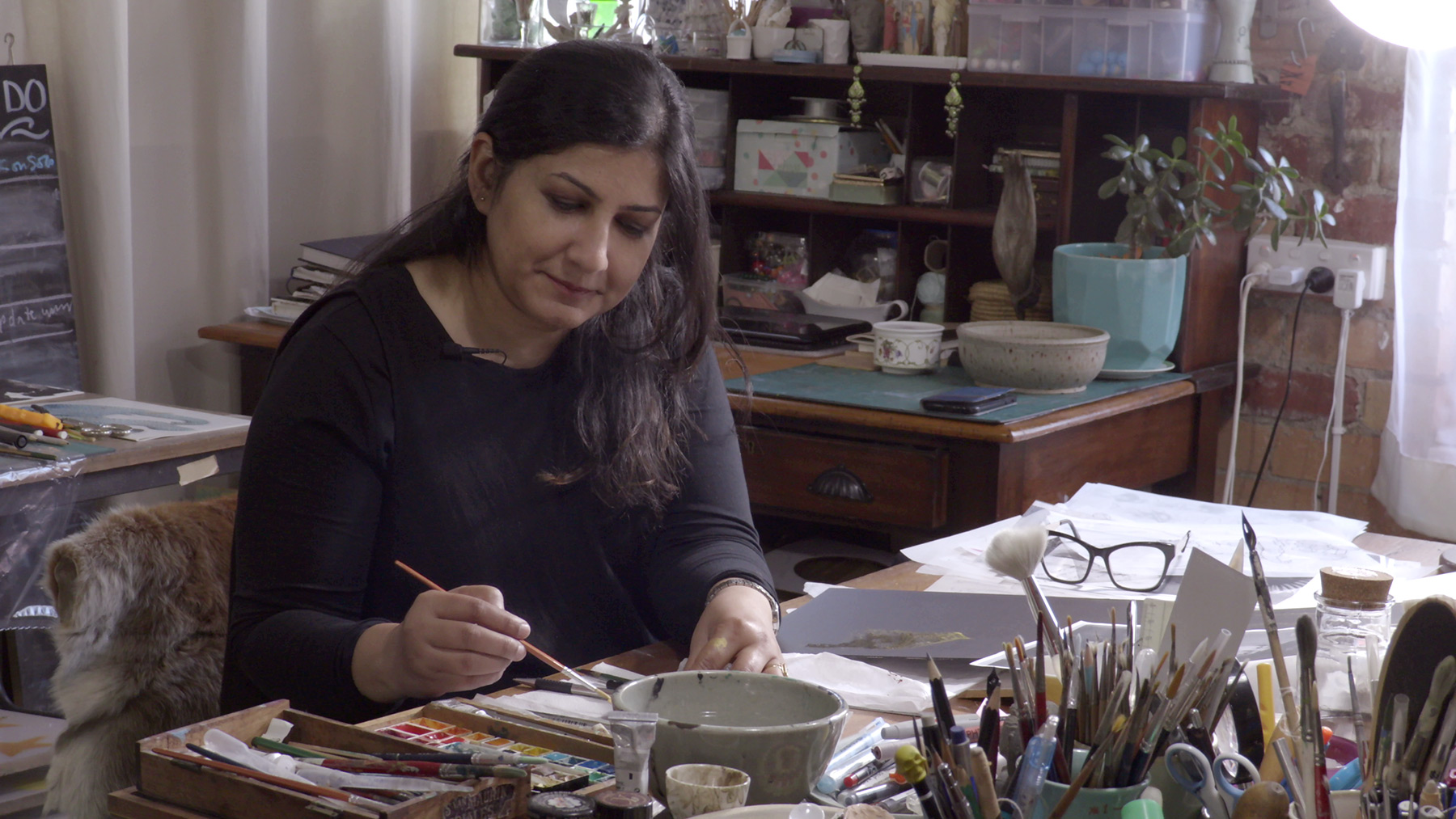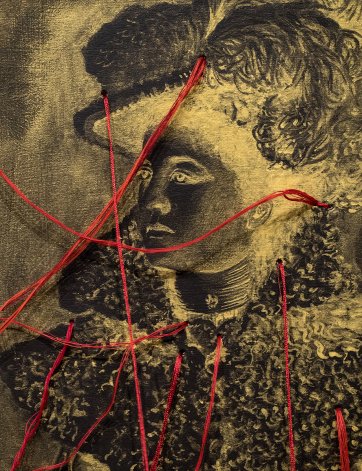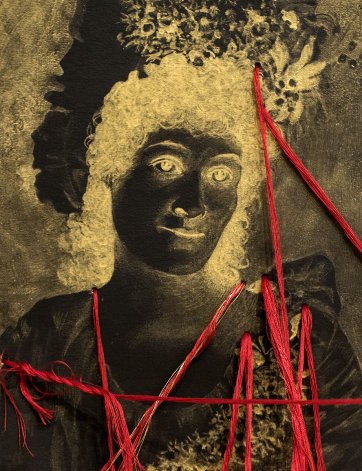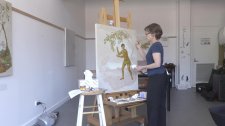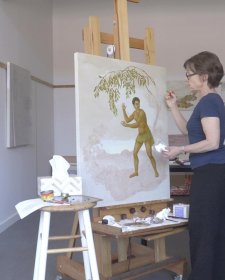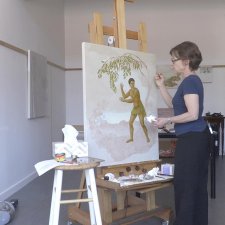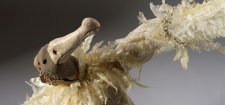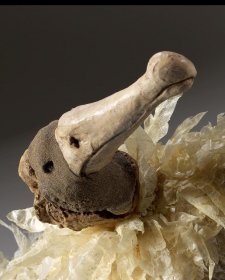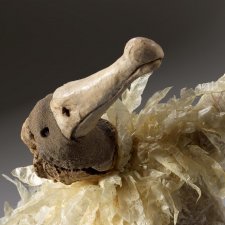Artist statement
In this series I have reworked portraits of women from the late 19th to the early 20th century, photographed at two commercial studios in Melbourne. The prints, sourced from the Melbourne Town Hall archive, are unnamed; I am working with the visual presence the women carefully crafted for the photograph.
My reading is intentionally restricted to the visual clues these women chose to don on the day the photograph was taken. How did they want to be seen? How was a particular dress chosen over another? Which aspects of the image-making process were accidental, and which were wilful and deliberate? The past of the portrayed needs unpacking; their histories – with losses, longings and loves – require untangling.
1 2 Refined Portraits of Desire (detail) 2018 Both by Nusra Latif Qureshi.
I have painted these detailed versions of portraits in inverse, to reflect the appearance of the face in photographic negatives. The women painted in the larger ovals are young, dressed in their best formal clothes in some frames, while sporting summery costume and flowers in others. I compare their gazes to those in the present day selfie, as they convey an equally powerful desire to be admired. Here, the desire is articulated by dreamy eyes and tilted head (to be liked, to be rescued); by fully buttoned-up woman with stiff hats, who pose, dignified (the desire to be respected); and by the playfully costumed women who channel their own desire by dressing it up, perhaps depriving the viewer of a voyeur’s privilege.
The threads in the works link the subjects together – to each other and to the past I have imagined for them (in the rectangular panels) through the use of outlined figures and objects that might represent their desires, possessions and losses. The red strands could also represent some restriction, prohibition or trauma that held the women back. The connecting threads are not indicative of any more substantive link between the subjects; they are more a reflection of their collective desire for some other day, a better or more refined time – like the dress worn on that day, a tapestry seen somewhere, a certain gentleman’s glance, or a Chinese vase.

